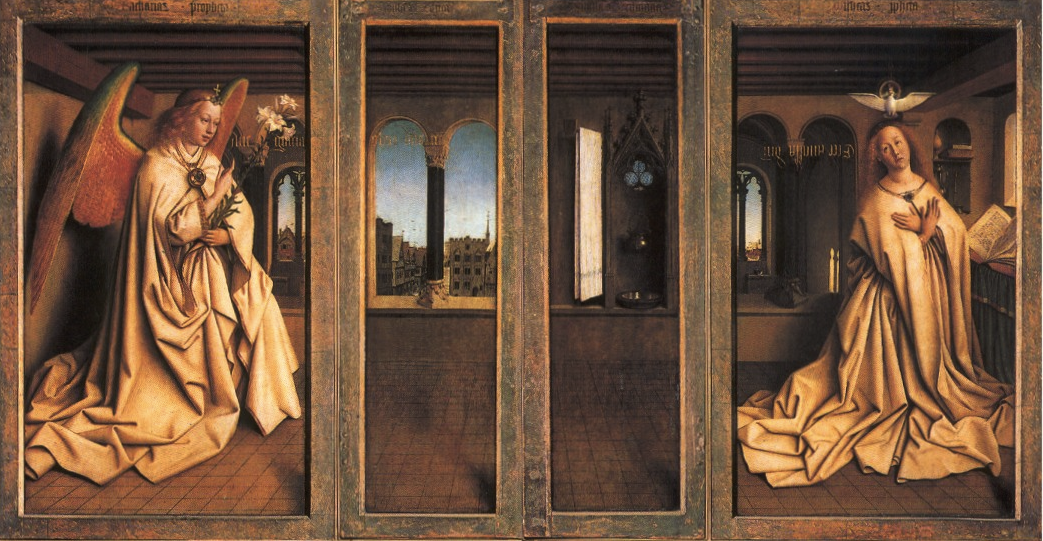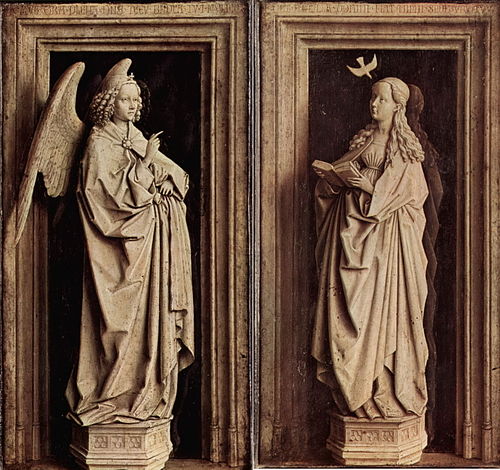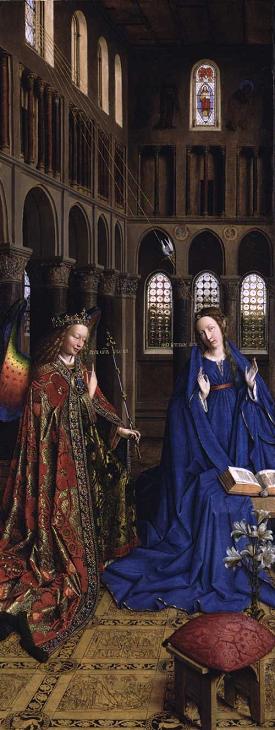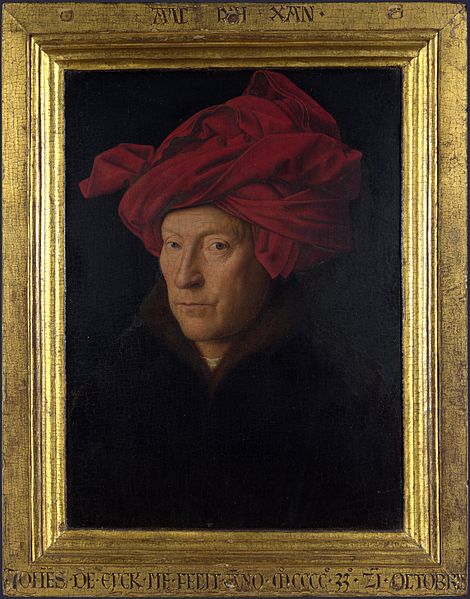
LIFE AS MYTH
![]()
JOURNAL
![]()
JOURNAL 2012
The seeds of wisdom
Leaning into the answer
![]()
WINTER 2012
Mapping the mystery
Dreams, symbolism & the unconscious
The Arnolfini Wedding Portrait
![]()
LIFEWORKS
![]()
ATLAS
![]()

WINTER 2012
JAN VAN EYCK
Jan Van Eyck [c. 1395 - 1441], or Johannes de Eyck, was a Flemish painter, one of the finest artists of the 15th century and also known as the "father of oil painting". Though the use of oil-based painting predates Van Eyck by several centuries, Jan and his brother, Hubert, were the earliest to use it for panel painting and to create extraordinary effects through the mastery of glazes, wet-on-wet and other painterly techniques.
The earliest source on Van Eyck is a biography [1454] by Bartolomeo Facio. He describes the painter as one of the best artists of the 15th century and an educated man grounded in the classics. The earliest official record of Van Eyck is as court painter for John of Bavaria in 1422. At the death of John, Van Eyck moved to the court of Duke Philip the Good of Burgundy. His primary surviving work from this time is in the Turin-Milan Hours, an extravagantly illuminated manuscript which contained not only a book of hours but a prayer-book and missal as well. By 1479 a section of the manuscript belonged to the House of Savoy who gave it to the National Library in Turin in 1720. That manuscript, along with Van Eyck's illuminations, were lost during a fire in 1904.
Duke Philip held Van Eyck in high regard, paying him a sizeable salary when he first entered his court. Within a short period of time that original salary doubled twice and Van Eyck also received special bonuses. His salary alone sets him apart from other painters of this period since most depended on commissions for their survival. The Duke became godfather to one of Van Eyck's children, supported his wife when Van Eyck died, and provided the necessary financial assistance for one of his daughters to enter a convent.
Van Eyck's most celebrated work is the Ghent Altarpiece, a commission by Jodocus Vijdts and his wife Elisabeth Borluut for the Saint Bavo Cathedral in Ghent, Belgium. There is some question as to which Van Eyck, Jan or his brother Hubert, can claim credit for this masterpiece.
Hubert began the commission but died in 1426, long before the work was complete. A clue to the dual partnership was in the original frame which was destroyed during the Reformation. Jan Van Eyck often signed and dated his works on their frames. In the case of the Ghent altarpiece, records indicate that the destroyed frame bore an inscription which read that Hubert maior quo nemo repertus [greater than anyone] began the piece and Jan arte secundus [second best in the art] completed it. The "signature" is ambiguous as to the exact contribution of each brother and art historians are in disagreement.
Van Eyck died in 1441 and was buried in the Church of St. Donatian. Unlike his brother Hubert, a substantial amount of Jan Van Eyck's work survives him.
The Ghent altarpiece also known as Adoration of the Mystic Lamb or The Lamb of God. Hubert and Jan Van Eyck. (detail) 1432. the Cathedral of Saint Bavo. Ghent, Belgium.
Diptych of The Annunciation, Jan Van Eyck. 1434. Museo Thyssen-Bornemisza, Madrid.
The annunciation. Jan Van Eyck. 1434. National Gallery, Washington, DC.
Self portrait also known as Portrait of a man in a red turban. Jan Van Eyck. 1433. National Gallery, London. This painting is in its original frame which has two inscriptions: at the top, ALC IXH XAN (I Do as I Can); at the bottom, JOHES DE EYCK ME FECIT ANO MCCCC.33.21. OCTOBRIS (Jan Van Eyck Made Me on October 21, 1433).




